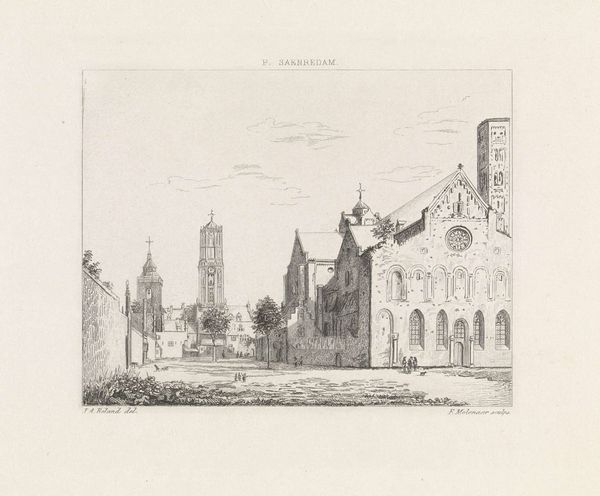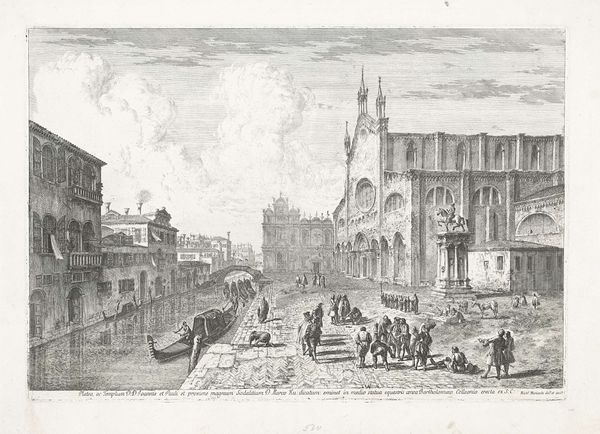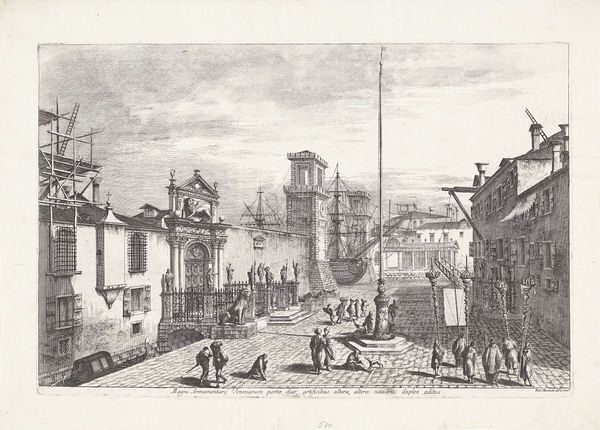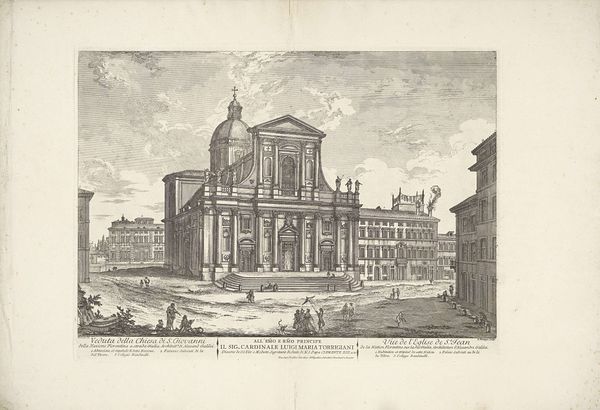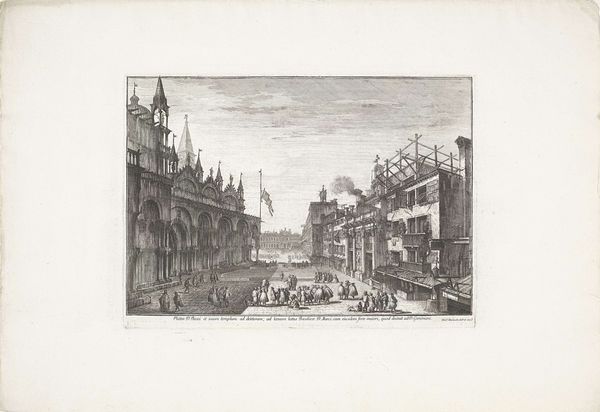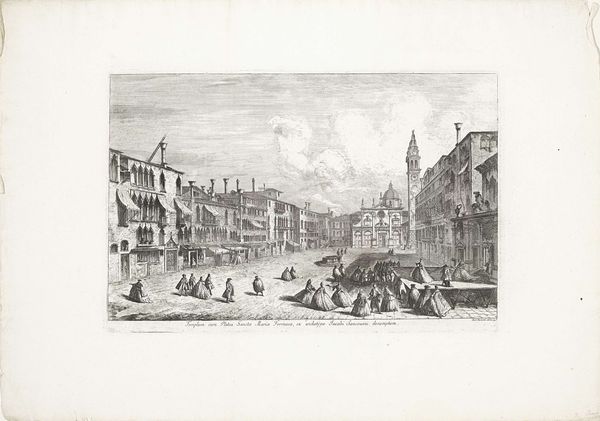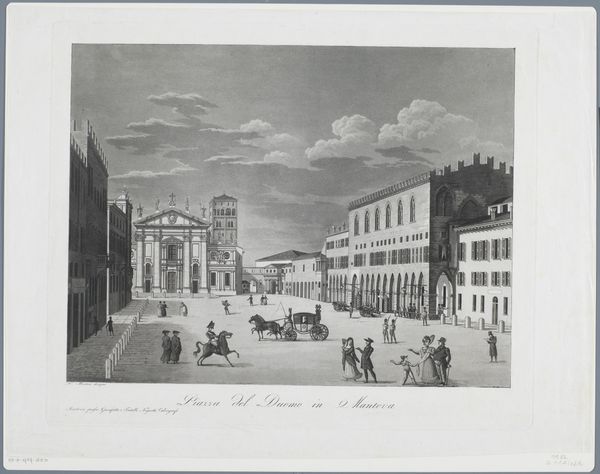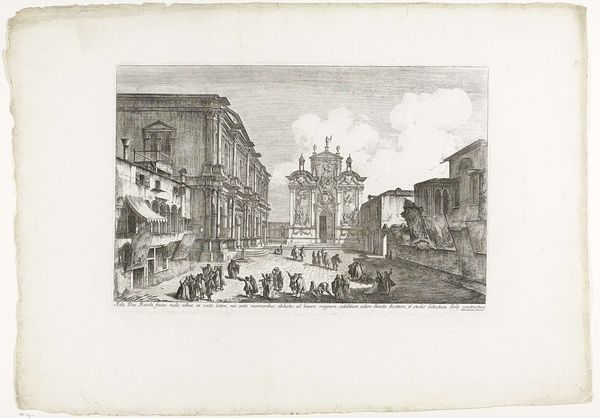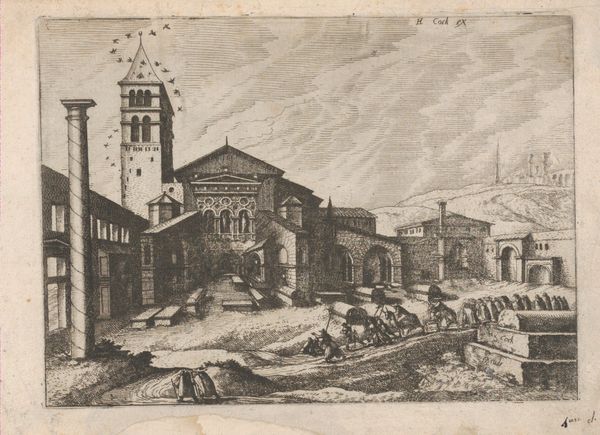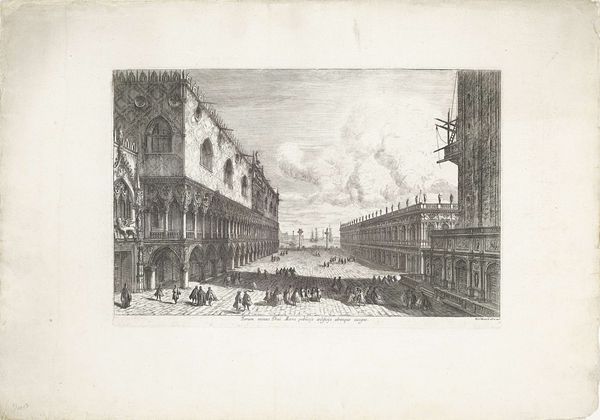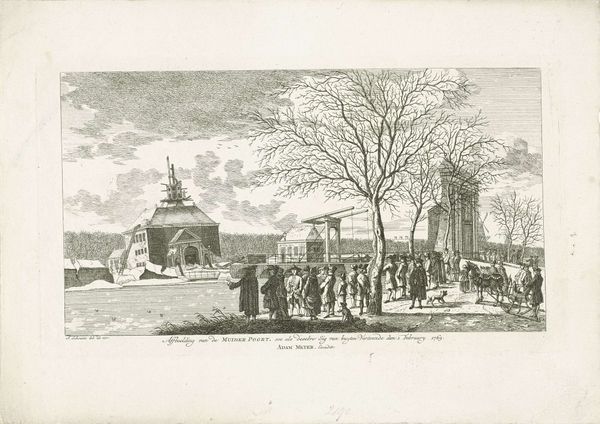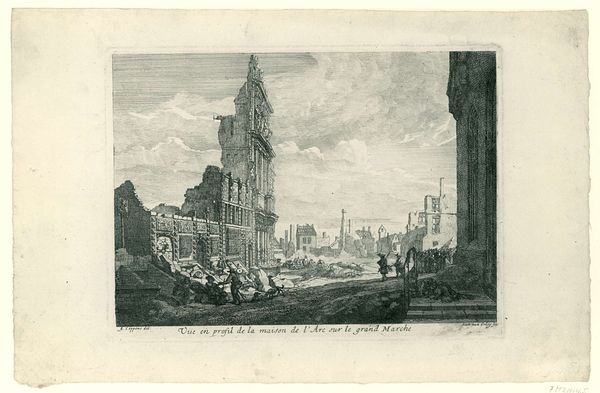
print, etching, engraving
#
venetian-painting
#
baroque
# print
#
etching
#
landscape
#
perspective
#
cityscape
#
history-painting
#
engraving
Dimensions: height 317 mm, width 468 mm
Copyright: Rijks Museum: Open Domain
Curator: Immediately I’m drawn to the light; it's somehow both diffused and incredibly directional, creating these sharp contrasts that pull you into the scene. Editor: Yes, that play of light is extraordinary. We're looking at "De Santa Maria Gloriosa dei Frari te Venetië" by Michele Marieschi, an etching dating to 1741, housed right here in the Rijksmuseum. What strikes me is its capture of a very specific moment in the social life of Venice, with the Frari church as a kind of backdrop. Curator: Absolutely. The church looms large, not just as a religious edifice but as a silent witness to daily Venetian life. The figures bustling about… do you see a subtle air of mercantile energy, almost theatrical, woven into the fabric of the cityscape? Editor: Precisely! Venice, at this point, was a liminal space – caught between its glorious past and the pressures of emerging global capitalism. Marieschi’s work, particularly through the engraving medium, allowed for wider dissemination, feeding into the exoticization, and commodification of the city. I mean, just observe how class is displayed on the stage he crafts—the privileged ascending those steps, the workers on the waterfront, even in repose! Curator: The perspective is really incredible. This visual dynamic isn't only an aesthetic device, it creates a world where everything appears balanced and considered; is this, perhaps, Marieschi consciously positioning the church, and maybe by extension religion, as an organizing force? Editor: Or a romanticized projection? The Baroque period was all about spectacle and persuasive power. Perhaps it uses that religious space as a form of state control projected out to citizens or wealthy consumers, almost like subtle propaganda for an imagined Venice. Also notice how Marieschi emphasizes certain buildings with sharp angular shadows—almost violently graphic! Curator: Fascinating observation. That juxtaposition of divine presence and worldly activity encapsulates the Baroque aesthetic: the spiritual intertwined with the human. Editor: I agree that it beautifully demonstrates Venice as a site where public spectacle blends with individual lives, religion intersects with commerce, and history continually collides with a constantly transforming present. I look forward to lingering longer on this tension that Marieschi seems keen to represent! Curator: And, certainly for me, this close observation reconfirms art's potent capacity to be far more than just an image. It’s a portal to understanding values.
Comments
No comments
Be the first to comment and join the conversation on the ultimate creative platform.
